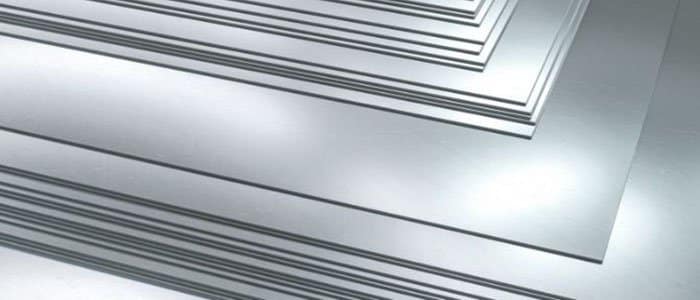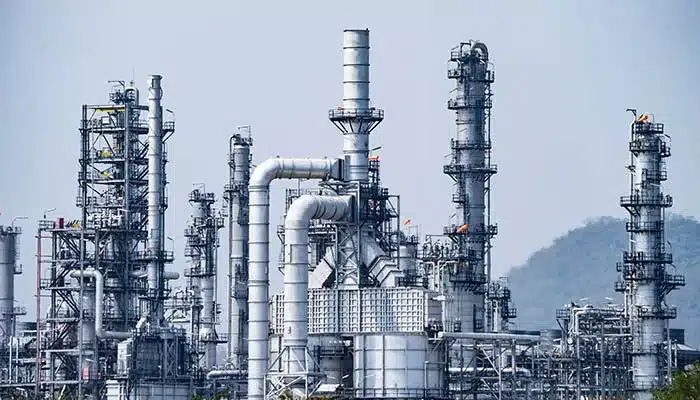In the diverse world of stainless steels, martensitic grades stand out for their unique ability to be hardened through heat treatment, offering a compelling combination of high strength, moderate corrosion resistance, and good wear resistance. While they may not match the corrosion immunity of austenitic grades like 304 or 316, their superior mechanical properties make them the material of choice for numerous demanding applications.
This guide provides a clear and comprehensive overview of martensitic stainless steel, covering its fundamental characteristics, how it’s made stronger, and where it’s typically used.
What Defines Martensitic Stainless Steel?
Martensitic stainless steels are a family of alloys primarily characterized by their ability to form a hard, crystalline structure called “martensite” when rapidly cooled from a high temperature (a process known as quenching). This microstructural transformation is the key to their high strength and hardness.
Their chemical composition is distinct from other stainless steel families:
- Chromium (Cr): They contain a higher chromium content (typically 11.5% to 18%) than carbon steels, which provides their “stainless” properties and corrosion resistance.
- Carbon ©: This is the critical element that enables hardening. Martensitic grades have a significantly higher carbon content (often 0.1% to over 1.0%) than austenitic or ferritic stainless steels.
- Low Nickel: Unlike austenitic steels, they contain little to no nickel, which makes them a more cost-effective option in many cases but also reduces their overall toughness and corrosion resistance.
Common grades in this family include the well-known 410, 420, and 440C, each offering a different balance of hardness, corrosion resistance, and toughness.
Key Properties of Martensitic Stainless Steels
The properties of martensitic stainless steels are highly dependent on their specific grade and heat treatment condition. However, they share a general set of characteristics:
- High Strength and Hardness: This is their primary advantage. Through proper heat treatment, they can achieve hardness levels far exceeding those of other stainless steel types.
- Moderate Corrosion Resistance: They offer good resistance to atmospheric conditions, fresh water, steam, and many mild chemicals. However, they are not suitable for highly corrosive environments like seawater or strong acids, where austenitic grades would be preferred.
- Good Wear Resistance: Their inherent hardness makes them highly resistant to abrasion and wear, which is crucial for components like cutting tools and bearings.
- Magnetic Properties: Unlike non-magnetic austenitic steels, martensitic stainless steels are magnetic in all conditions.
- Limited Weldability: The high carbon content and the formation of a hard, brittle structure in the heat-affected zone can make welding challenging. Special procedures like pre-heating and post-weld heat treatment are often required to prevent cracking.
Compared with other stainless steel
| Feature | Martensitic Stainless Steel | Austenitic Stainless Steel | Ferritic Stainless Steel |
|---|---|---|---|
| Primary Structure | Martensite (body-centered tetragonal) | Austenite (face-centered cubic) | Ferrite (body-centered cubic) |
| Hardening Mechanism | Heat treatable (quench & temper) | Work hardening only | Not heat treatable |
| Magnetic | Yes | No (generally) | Yes |
| Corrosion Resistance | Moderate | Excellent | Good to Very Good |
| Weldability | Poor to Fair (requires care) | Excellent | Good |
| Typical Grades | 410, 420, 440C | 304, 316, 321 | 430, 446 |
| Key Strength | High strength & hardness | Excellent formability & corrosion resistance | Good corrosion resistance & low cost |
The Role of Heat Treatment: Unlocking Their Potential
The defining feature of martensitic stainless steel is its response to heat treatment. The process is essential to achieve the desired mechanical properties and typically involves three main steps:
- Annealing: The steel is heated to a high temperature and then slowly cooled. This softens the material, improves its ductility, and makes it easier to machine or form into its final shape.
- Hardening (Quenching): The annealed steel is reheated to a specific austenitizing temperature and then rapidly cooled, or “quenched,” usually in oil or air. This rapid cooling traps the carbon atoms within the iron crystal lattice, forming the hard, brittle martensitic structure.
- Tempering: The hardened steel is still too brittle for most applications. Tempering involves reheating it to a lower temperature and holding it for a period. This process reduces internal stresses and brittleness, significantly improving toughness while only slightly reducing hardness. The tempering temperature can be adjusted to achieve the final desired balance of hardness and toughness.
Common Applications of Martensitic Stainless Steel
Thanks to their unique property profile, martensitic stainless steels are found in a wide range of industrial and consumer products where strength and wear resistance are paramount.
- Cutlery and Knives: Grade 420 is a classic choice for high-quality kitchen knives and surgical instruments due to its excellent edge retention and moderate corrosion resistance.
- Surgical and Dental Instruments: The ability to be hardened to a very sharp edge and sterilized repeatedly makes it ideal for scalpels, scissors, and other precision tools.
- Turbine Blades and Pump Parts: Components in steam and gas turbines, as well as pumps and valves, benefit from the high strength and resistance to erosion at elevated temperatures.
- Bearings and Gears: The high hardness and wear resistance of grades like 440C make them suitable for ball bearings and gears that operate under high loads.
- Oil and Gas Industry: Used for valve parts, shafts, and fasteners that require high strength in corrosive downhole environments.
- Firearms: Components like barrels and slides often use martensitic stainless steel for its durability and ability to withstand high pressures.
To help visualize the relationship between common grades and their uses, here is a summary table:
| Grade | Key Characteristics | Typical Applications |
|---|---|---|
| 410 | General purpose, lowest cost, good strength. | Fasteners, pump shafts, valve parts, kitchen utensils. |
| 420 | Higher carbon than 410, better hardness and wear resistance. | Cutlery, surgical instruments, scissors, mold dies. |
| 440C | Highest carbon content of common martensitic grades, excellent hardness and wear resistance. | High-end bearings, valve seats, knife blades, instrument pivots. |
Conclusion
Martensitic stainless steel is a powerful and versatile material that fills a critical niche in the engineering world. Its ability to be heat-treated to achieve exceptional strength and hardness makes it indispensable for components that must withstand wear, stress, and high loads. While it doesn’t offer the same level of corrosion resistance as austenitic steels, its mechanical properties are often a more important design consideration.
At Dahxun Alloy Co., Ltd., we offer an extensive selection of martensitic stainless steels, including 410, 420, and 440C, available in various forms and tempers. Our experts can help you navigate the technical specifications to select the optimal grade and heat treatment for your specific application. Contact us today to learn more about how our materials can enhance the performance and durability of your products.




